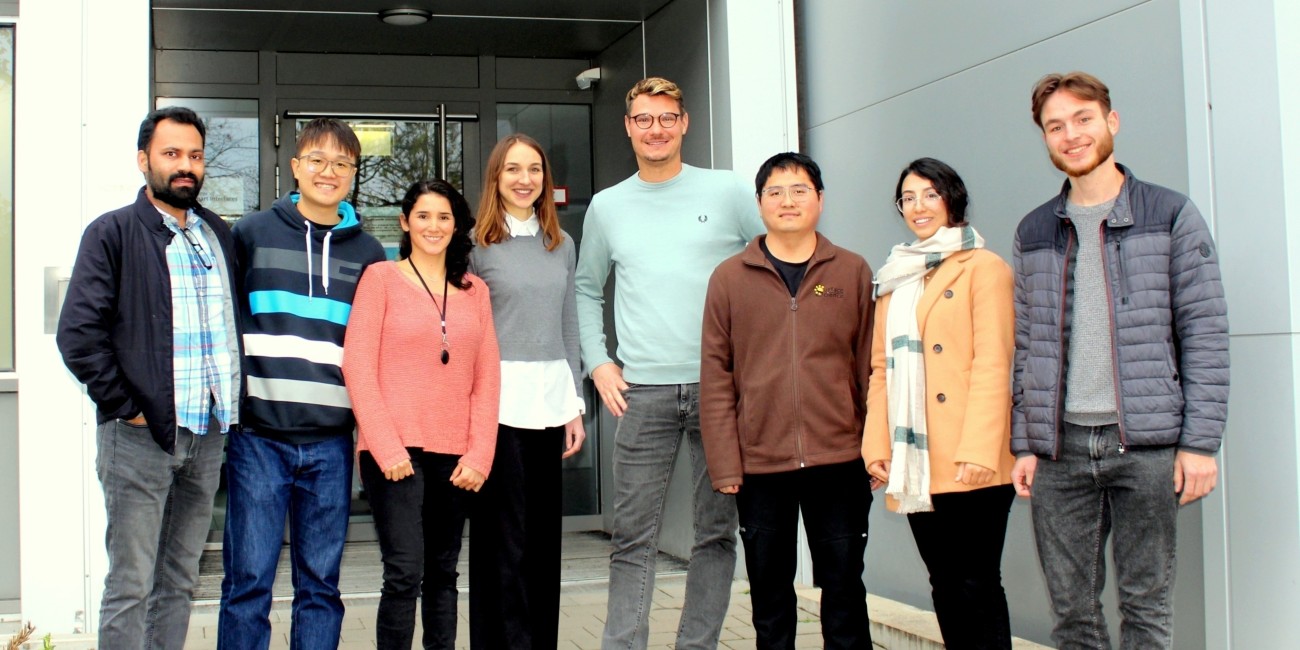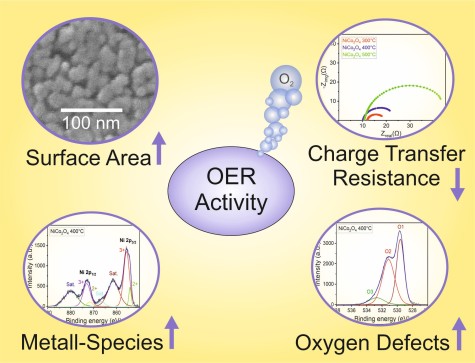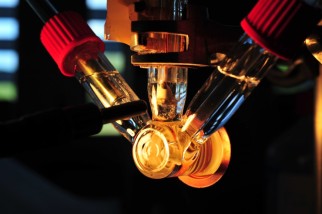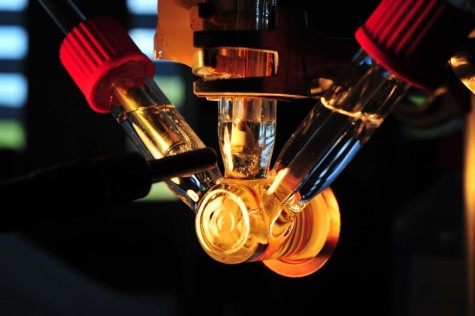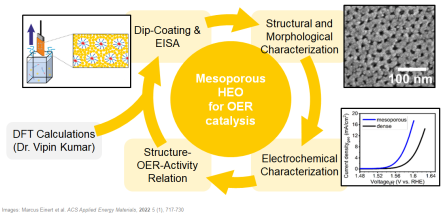Research Area
The junior research group ENR, as part of the Surface Science Laboratory at the Materials and Geoscience Department at TU Darmstadt, works on the development of novel wet-chemical synthesis strategies for the preparation of nanostructured (high-entropy) metal oxides. The structure and morphology of the functional materials are tailored for driving the electrocatalytic and photoelectrochemical water splitting reaction efficiently in order to produce green hydrogen – the energy source of the future.
The sol-gel approach is used to fabricate nanoporous thin films that have extraordinarily large surface areas and therefore provide many reaction centers at the surface yielding high reactivity. Our research focuses on the evaluation of the bulk and surface properties, which are identified by applying various physicochemical characterization methods, such as X-ray diffraction, scanning electron microscopy, as well as Raman and photoelectron spectroscopy. Those techniques are applied to postulate important structure-property-function relationships, which are the basis for further materials optimization.
The synthesized materials are extensively (photo-)electrochemically investigated as electrocatalysts and/or photoelectrodes for (solar) energy conversion devices, with the ultimate goal of improving the (photo-) electrochemical activity by modifying their electronic structure and morphology – and thus their characteristic properties – at the nanometer scale.

Dr. Marcus Einert
Contact
meinert@surface.tu-...
work +49 6151 16-22651
Work
L2|01 157
Peter-Grünberg-Str. 2
64287
Darmstadt

